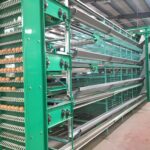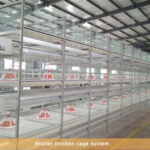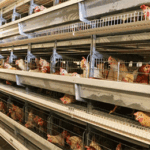Why choose a cage system to raise chickens?
Why choose a cage system to raise chickens?
Chicken cage systems play an important role in the poultry industry. They offer many advantages, including various types of chicken cages as well as unique features. This paper will discuss the types and characteristics of chicken cage system.
Type of chicken cage
A-type layer cage system has the characteristics of simple structure, convenient operation and maintenance. A-type layer cages automation equipment can be highly selective. According to different requirements of customers, the selection of non-automated, semi-automated, low-configuration automation, high-configuration automation equipment cage. Therefore, the A-type layer cage system has low input cost and fast income.
H-type battery cage system has the characteristics of high automation and high density. The shape design of H-type cage system can effectively improve the housing and land utilization rate, reduce the feeding cost, and effectively improve the labor productivity. Compared with A-type layer cage system, H-type battery cage equipment hardware investment cost is higher. If you choose the H-type battery cage system, it is necessary to install somepoultry breeding automation equipmentconfiguration, such as automatic manure system, automatic egg collection system, automatic feeding and so on.
From the perspective of breeding scale, H-type battery cage system is more suitable for large-scale breeding. The high automation characteristics of the H-type battery cage make it possible to achieve unattended coop.
In addition to breeding size, the poultry breeding cage system of choose can also be based on the type of chicken. For example, if you wants to raise 20,000 chickens, you can choose A-type layer cage system; If you want to raise broilers, the H-type battery cage system is the best choice.
Advantages of chicken cage system
Improving the breeding environment: The chicken cage system provides a closed environment to control the influence of external factors on poultry production. For example, they can prevent invasive animals, reduce the spread of disease, and provide suitable temperature and humidity conditions.
Improve breeding efficiency: Cage systems help optimize the breeding process and increase production efficiency. Automated systems provide feed and water automatically, reducing manual operations. In addition, different types of chicken cages can be combined as needed to maximize the use of space and increase the number of breeds.
Keeping the chickens healthy: The cage system provides a relatively clean and hygienic environment for the chickens. This helps reduce disease transmission and infection, improves the health of chickens, and increases egg production and meat quality.
Easy management and maintenance: The design of the cage system makes management and maintenance easier. For example, plastic chicken cages can be easily cleaned without accumulating dirt and odors. In addition, the monitoring function of the automated system can help farmers find and solve problems in a timely manner.
In the poultry industry, chicken cage systems are an important tool to improve breeding efficiency and chicken health. Different types of chicken cages can be selected according to demand, and they have their own unique characteristics and advantages. Through the proper selection and use of chicken cages, farmers can increase production, improve the breeding environment, and achieve sustainable poultry operations.











